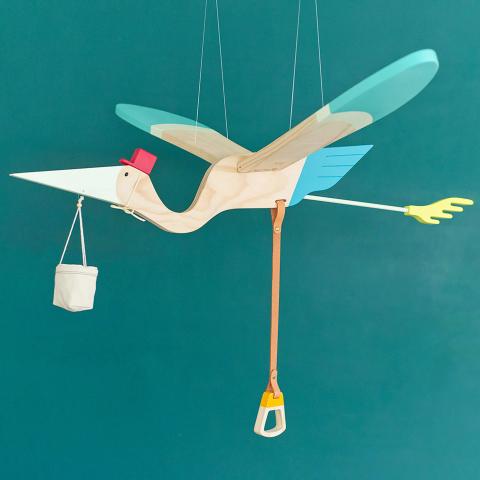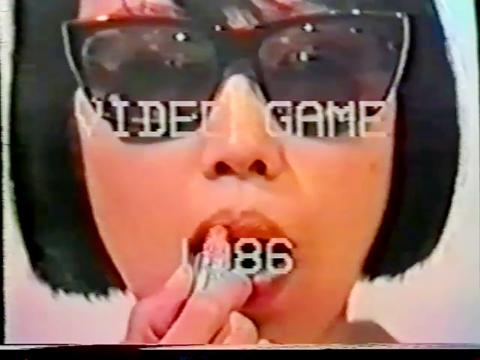Creative Expo Taiwan (台灣文博會) is an annual cultural fair that showcases design, craft and creative licensing opportunities by Taiwan’s creative industry. Organized by the Ministry of Culture and Taiwan Design Center, the five-day event of impressive scale occupies Huashan 1914 Creative Park, Songshan Cultural and Creative Park and Taipei Expo Park. This year the fair takes on the theme of “body knowledge,” which highlights design and cultural explorations that bring us back to our basic senses. From innovative cuisine, handcraft, music, fashion, design and photography, the show seeks to cover a wide range of creative forms. Taiwanese hip hop is featured at Songshan Cultural and Creative Park; a presentation of videos, sounds and images introduce the work of local rap artists, their creative process as well as Taiwan’s distinct social context for this style of music. “Body Defining” is another promising show section, which showcases local clothing lines with special “functions, outlines and shapes to make them more suitable for workers’ physical labor,” according to the Expo guide. An extensive program of films and talks will shed light on rising cultural trends, with special focus on fashion, music and social design.
■ Huashan 1914 Creative Park, Songshan Cultural and Creative Park, and Taipei Expo Park. Check the website for specific venue times: creativexpo.tw.
■ From Wednesday until April 22

Photo Courtesy of Eguchi Toys
(Not) Just a Historical Document: Hong Kong-Taiwan Video Art 1980-1990s presents a selection of pioneering video art by Taiwanese and Hong Kong artists that reflect upon a time of social and political upheaval. The 80’s and 90’s were marked by a number of transformative events, including the lifting of martial law in Taiwan, the Tiananmen Square Massacre in Beijing and the British handover of Hong Kong to China. It was also a time when video editing technologies were becoming more accessible commercially, creating an upsurge of new experimentation in new media art. Ellen Pau (鮑藹倫), Yau Ching (游靜) and Wong Chi-fai’s (黃志輝) Here’s Looking at You, Kid! (卡拉【超住(你)?】OK) is a mock karaoke video that remixes footage of TV commercials, British government footage and videos of Hong Kong under Japanese rule. Wang Chun-chieh (王俊傑) and Cheang Shu-lee’s (鄭淑麗) How Was History Wounded (歷史如何成為傷口) is a half-hour video about three workers in a news studio commenting on the issues of state media control, democracy and consumerism as news about the Tiananmen Square Massacre is broadcast on TV. Green Team’s (綠色小組) Green TV’s Inaugural Film (綠色電視台開播片) is a recording of the premiere broadcast of Taiwan’s first independent TV channel Green TV. The channel was set up in a time when the Chinese Nationalist Party (KMT) had a monopoly over Taiwanese TV. Overall, the show encourages visitors to consider the state of affairs today by reviewing the social climate of our recent past.
■ Museum of Contemporary Art, Taipei (台北當代藝術館, MOCA, Taipei), 39 Changan W Rd, Taipei City (台北市長安西路39號), tel: (02) 2552-3721. Open Tuesdays to Sundays from 10am to 6pm

Photo Courtesy of Museum of Contemporary Art Taipei
■ Until June 3
Chinese artist Shi Jinsong (史金淞) creates sculptural installations, paintings and theatrical performances that explore the ephemerality of physical matter and the sense of passing time in daily life. He often draws from Chinese tradition and myths and alludes to hidden value systems and their potential for change. His solo exhibition, All That is Solid Melts into Air, currently on view at Mind Set Art Center, borrows its title from Kal Marx’s Communist Manifesto. The dissolution of matter Marx describes is reinterpreted by Shi in today’s context, “with the Internet, globalization, consumerism and artificial intelligence sweeping across the globe, the power structure has radically changed…The solids we believe today, be it faith, power, culture... will one by one vanish into thin air,” writes curator Liao Liao (廖廖) in her introduction to the show. Show highlights include Hua Shan Project, a collection of daily objects that are made to look old, falsifying the passing of time; and 1200°C, a cluster of debris that remains after the artist placed architectural parts and daily objects into a 1200 degrees Celsius environment.
■ Mind Set Art Center (安卓藝術), 7F, 180, Heping E Rd Sec 1, Taipei City (台北市和平東路一段180號7樓), tel: (02) 2365-6008. Open Tuesdays to Saturdays from 11am to 6pm

Photo Courtesy of Mind Set Art Center
■ Until May 26
Taiwanese artist Liang Tian-yu’s (梁廷毓) solo exhibition, Mountain Scene, Sha Ren and Beheaded Stream, is an investigative art project that takes on the history of conflict between the Atayal and the Hakka people living in a mountainous region in Taoyuan. The project focuses on an alleged incident during the Qing Dynasty that involved a murderous beheading, and the mediation of local deities. Liang revisits the alleged site of the murder and seeks to understand the incident using local temple records, local myths and the memories of elderly residents. The project is presented as a series of video installations that reinterpret the story from different perspectives. On the first floor of the show, the sound of a rooster crows in an open field, alluding to a local myth that the Earth God once descended unto earth in the form of a rooster to scare away the Atayal people. The second floor retraces locations around the incident that were later named after the murder. The final floor presents the artist’s imagination of hell.
■ Waley Art (水谷藝術), 6, Ln 322, Wanda Rd, Taipei City (台北市萬大路322巷6號), tel: (02) 2301-1821. Open daily from 10am to 8pm
■ Until April 22
Currently on view at National Chengchi University is an intimate solo exhibition Em.body by master theater photographer Hsu Ping (許斌). The show features a selection of works from his extensive archive. Hsu has spent the last two decades documenting modern theater performances in Taiwan. He began his career as a photojournalist, capturing the rise of social movements after the lifting of martial law in 1987. During that time, Hsu also photographed small theater productions that eventually led him to regular assignments for Performance Art Review Magazine. Hsu enjoys documenting actors in rehearsal and captures their daily lives with honesty and integrity. Rehearsal is a time when a production works through practice and modification, a state that is invisible to the audience of the final production. Over the years, Hsu has followed the career of thespians that especially draw his interest, such as Taiwanese theater director Wang Mo-lin (王墨林), whom he has photographed for over 14 years. Through the eyes of Hsu, the show offers an artistic account of modern theater history in Taiwan.
■ National Chengchi University Art & Culture Center (政大藝文中心), 64, Zhinan Rd, Taipei City (臺北市指南路二段64號), tel: (02) 2939-3091 ext 63393. Open Mondays to Fridays from 8am to 10pm, and weekends from 8am to 5pm
■ Until April 27

The canonical shot of an East Asian city is a night skyline studded with towering apartment and office buildings, bright with neon and plastic signage, a landscape of energy and modernity. Another classic image is the same city seen from above, in which identical apartment towers march across the city, spilling out over nearby geography, like stylized soldiers colonizing new territory in a board game. Densely populated dynamic conurbations of money, technological innovation and convenience, it is hard to see the cities of East Asia as what they truly are: necropolises. Why is this? The East Asian development model, with

June 16 to June 22 The following flyer appeared on the streets of Hsinchu on June 12, 1895: “Taipei has already fallen to the Japanese barbarians, who have brought great misery to our land and people. We heard that the Japanese occupiers will tax our gardens, our houses, our bodies, and even our chickens, dogs, cows and pigs. They wear their hair wild, carve their teeth, tattoo their foreheads, wear strange clothes and speak a strange language. How can we be ruled by such people?” Posted by civilian militia leader Wu Tang-hsing (吳湯興), it was a call to arms to retake

This is a deeply unsettling period in Taiwan. Uncertainties are everywhere while everyone waits for a small army of other shoes to drop on nearly every front. During challenging times, interesting political changes can happen, yet all three major political parties are beset with scandals, strife and self-inflicted wounds. As the ruling party, the Democratic Progressive Party (DPP) is held accountable for not only the challenges to the party, but also the nation. Taiwan is geopolitically and economically under threat. Domestically, the administration is under siege by the opposition-controlled legislature and growing discontent with what opponents characterize as arrogant, autocratic

When Lisa, 20, laces into her ultra-high heels for her shift at a strip club in Ukraine’s Kharkiv, she knows that aside from dancing, she will have to comfort traumatized soldiers. Since Russia’s 2022 invasion, exhausted troops are the main clientele of the Flash Dancers club in the center of the northeastern city, just 20 kilometers from Russian forces. For some customers, it provides an “escape” from the war, said Valerya Zavatska — a 25-year-old law graduate who runs the club with her mother, an ex-dancer. But many are not there just for the show. They “want to talk about what hurts,” she